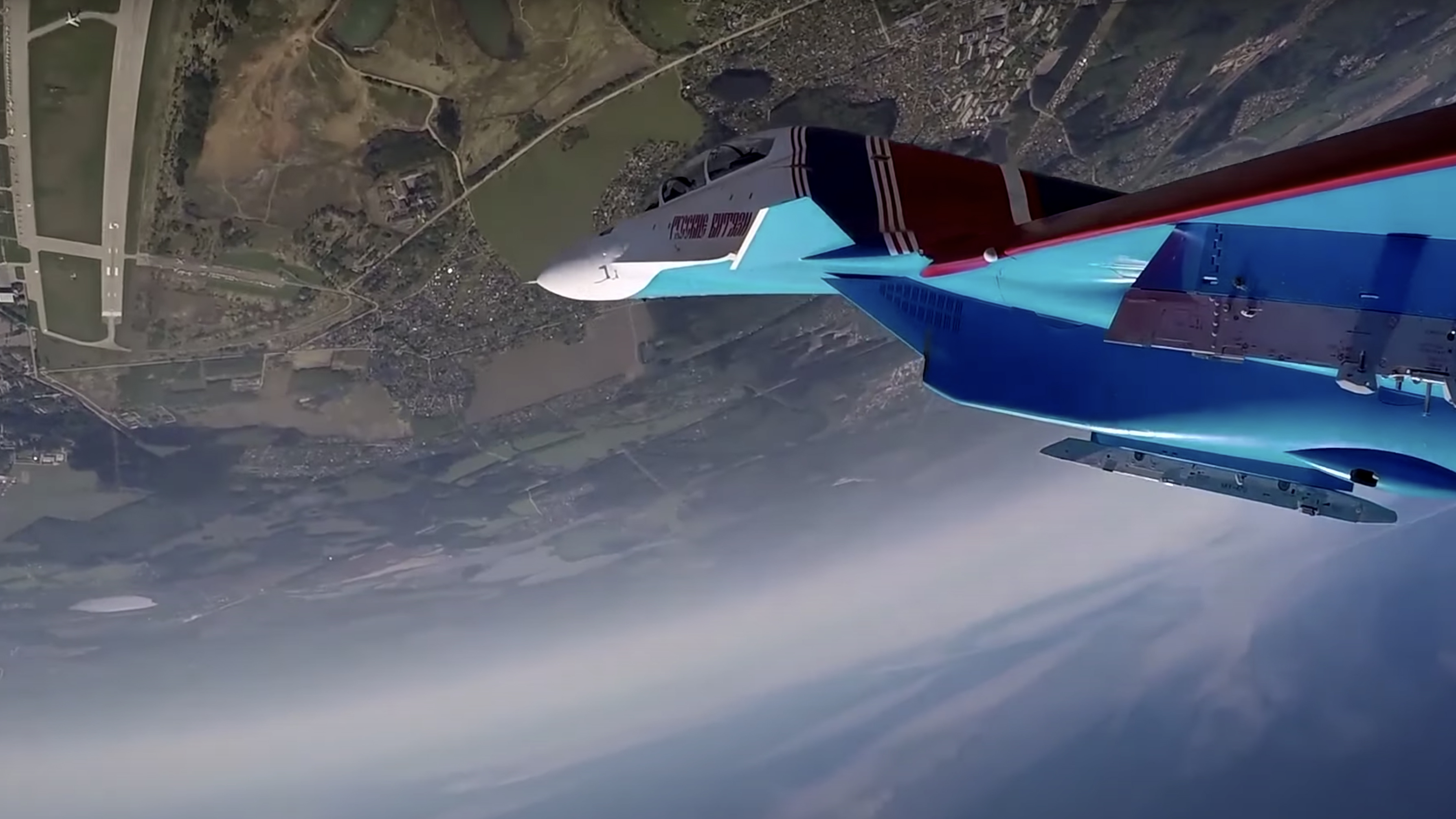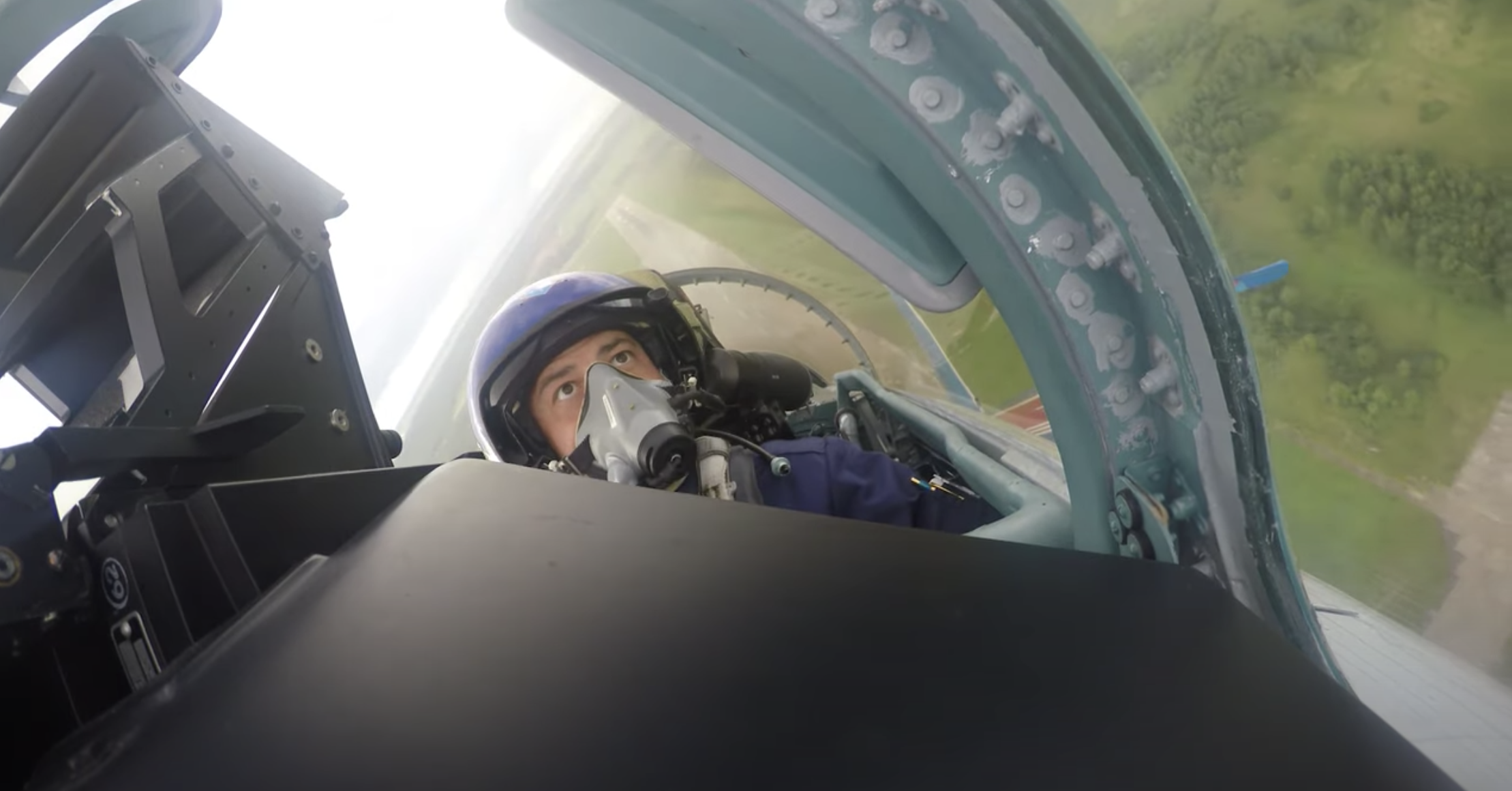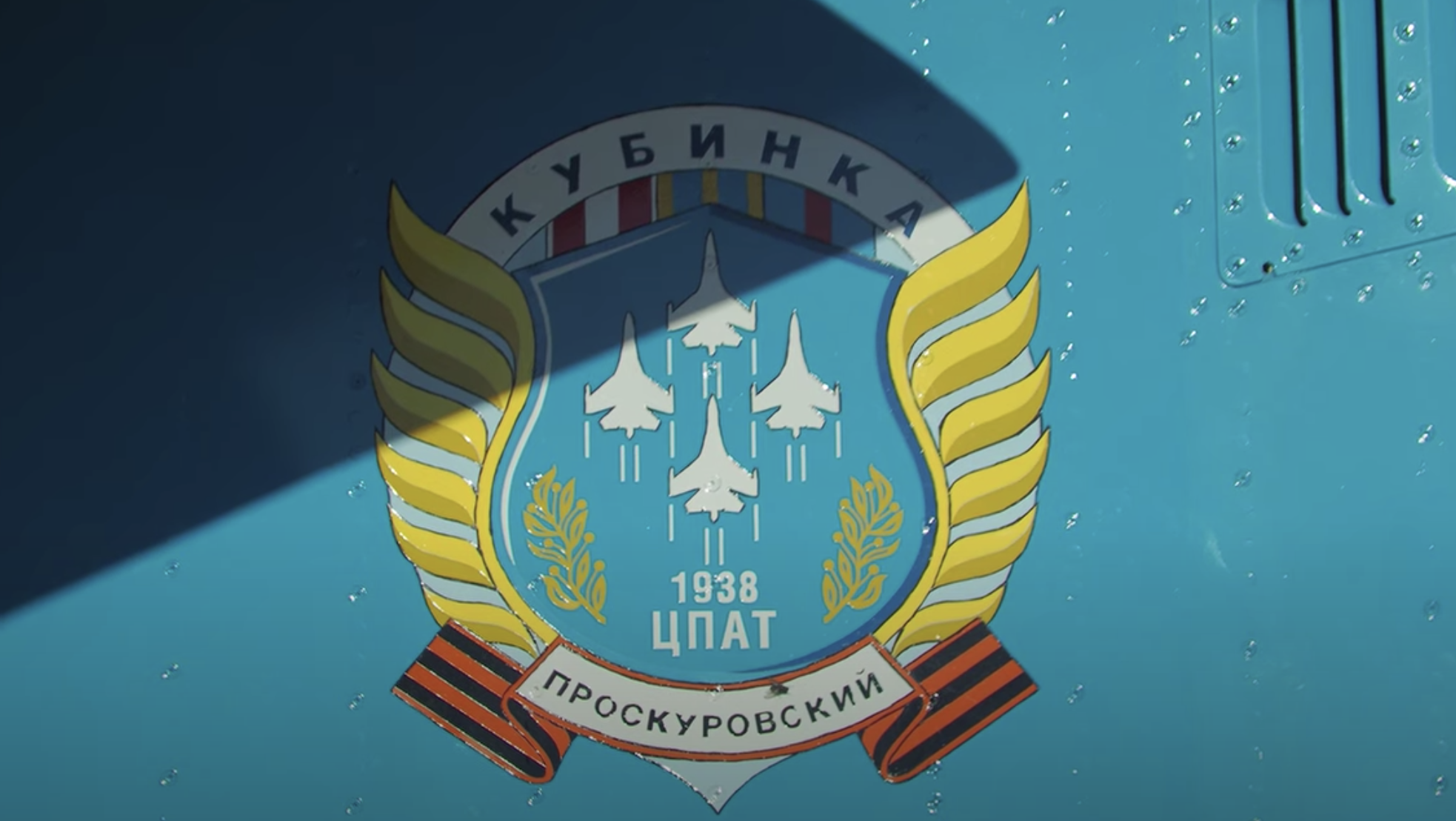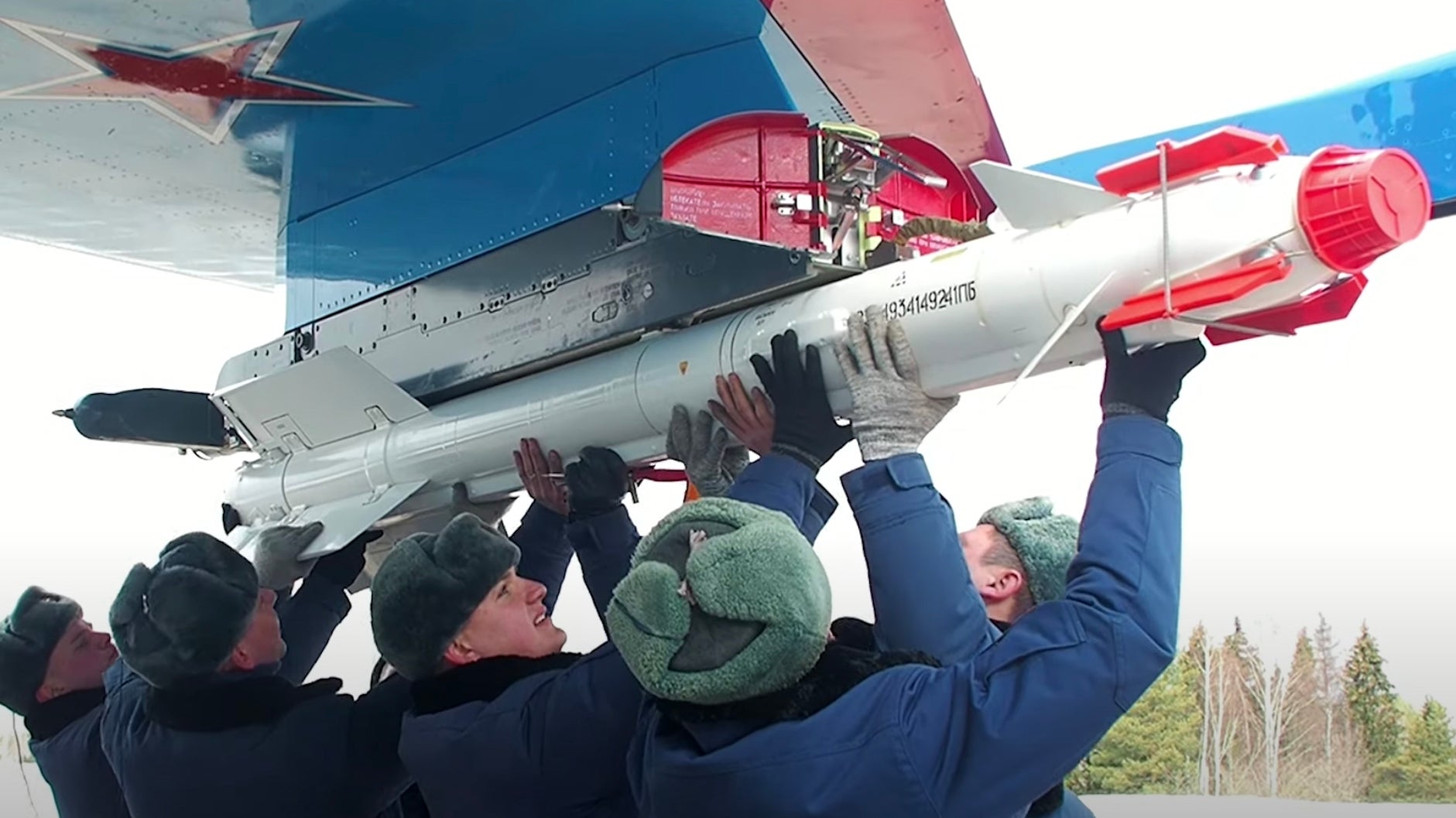The Russian Knights aerobatic demonstration team celebrated its 30th anniversary and to commemorate this milestone a promotional video has been published online that provides some spectacular insight into the unit’s six-ship precision formation-flying work. It also includes a rarely seen missile-firing sequence, a reminder that the team’s flight crews maintain their operational qualifications as combat-rated pilots within what is technically a frontline unit.
The team’s anniversary video, which was posted today to the Russian Ministry of Defense’s YouTube channel, showcases plenty of aerobatics. This includes low-level formation flying and dramatic breaks by the team’s two-seat Su-30SM and single-seat Su-35S multi-role fighters over the team’s base at Kubinka outside Moscow. The latest Su-35S jets began flying with the team last year and the Russian Knights are expected to operate the two types in parallel for the foreseeable future.

Most interesting, however, is the sequence starting at around the 1:16 mark in the video, seen below, showing a short-range infrared-guided missile streaking off the port wing of one of the team’s Flankers, leaving a shower of sparks in its wake. The missile is an AA-11 Archer — either a ‘legacy’ R-73 or one of the more modern R-74Ms, which are externally similar. You can read more about those missiles, and the enduring search for a successor, in this previous article.

Pilots conducting live-fire missile launches is by no means typical for a demonstration team, whose crews, in the Western world, at least, normally join up and leave their combat duties for a given period, focusing exclusively on demanding display flying, before returning to frontline units.
In Russia, it is different, however, and the pilots of the Russian Knights are expected to retain combat qualifications alongside their work as aerial ambassadors for Russia within a unit that’s formally designated as the 237th Aviation Technology Demonstration Center, or 237 TsPAT, to use its Russian abbreviation. In fact, the regiment is technically part of the frontline order of battle and its aircraft are fully combat-capable, only differing in terms of their flamboyant paintwork. Unlike their U.S. counterparts, the jets are not fitted with smoke generators or other major modifications.

This elite unit actually comprises two aerobatic teams flying from Kubinka. In addition to the Russian Knights, there are the Swifts, flying MiG-29 Fulcrum fighter jets. Interestingly, alongside these public-facing units, Kubinka also hosts some more shadowy aircraft, such as the Il-20M Coot intelligence-gathering aircraft that was accidentally shot down over Syria in September 2018.
Since 2009, the 237 TsPAT has been subordinated to the sprawling Lipetsk center, which is responsible for evaluating new Russian military aircraft, as well as developing tactics and training aircrew. As such, the pilots from the Russian Knights would likely also be expected to impart their expertise on younger aviators as part of the center’s training remit.
Beyond that, the pilots of the Russian Knights and Swifts are expected to undertake combat duty if required and therefore fly day-to-day combat training, in common with any other frontline Russian regiment. As part of this, there are periodic opportunities to conduct live firing of weapons. Since the Su-30SM and Su-35S are multi-role fighters, pilots have to be proficient in using air-to-air and air-to-ground weaponry.
The Russian Knights have flown versions of the Flanker fighter family since they were officially established on April 5, 1991, beginning with the Su-27. While big and heavy, these jets, and the subsequent Su-30SM and Su-35S derivatives have superb aerodynamic qualities and plenty of power. While the original Su-27 remains a good air show performer, the new members of the Flanker family are arguably the best in the world, and also represent some of the most modern multi-role fighters anywhere in the Russian Aerospace Forces.


While there have, in the past, been rumors that the Russian Knights might disband, or re-equip with Yak-130 tactical trainers, the fact the unit has both a frontline role and a promotional one is likely to secure its future for many years to come.
Contact the author: thomas@thedrive.com
